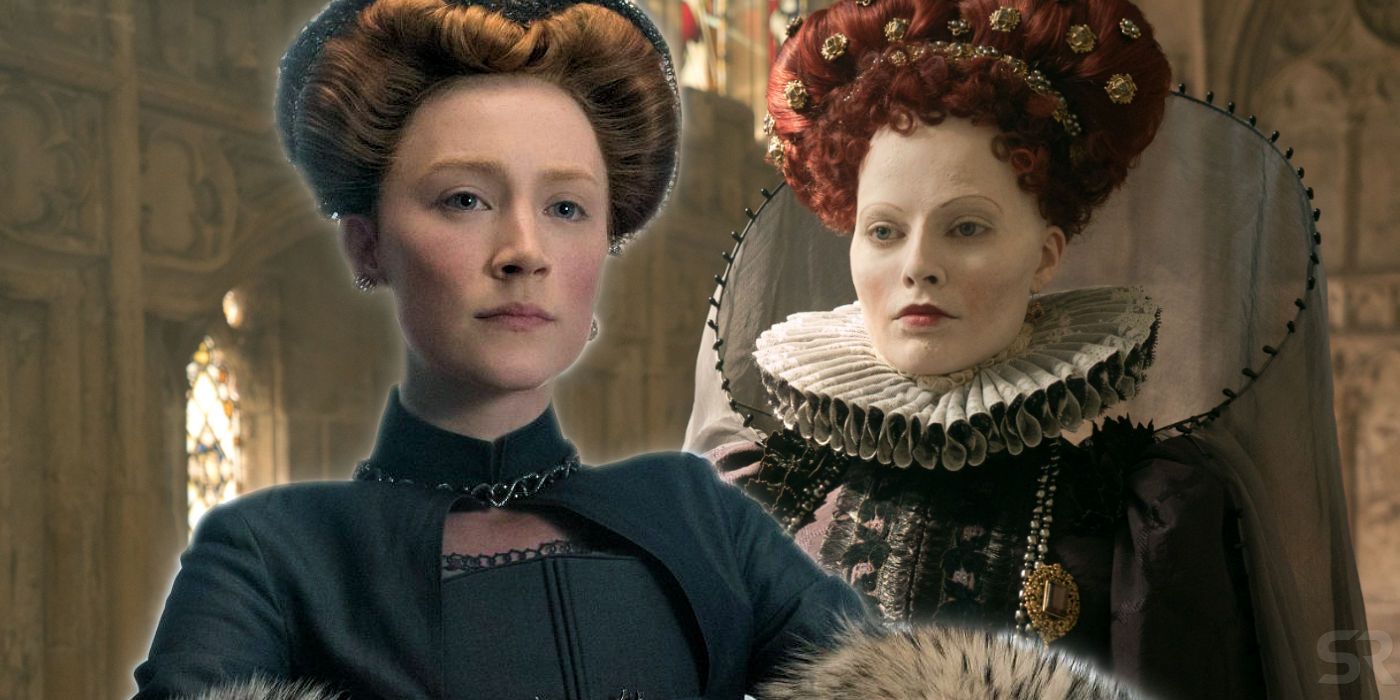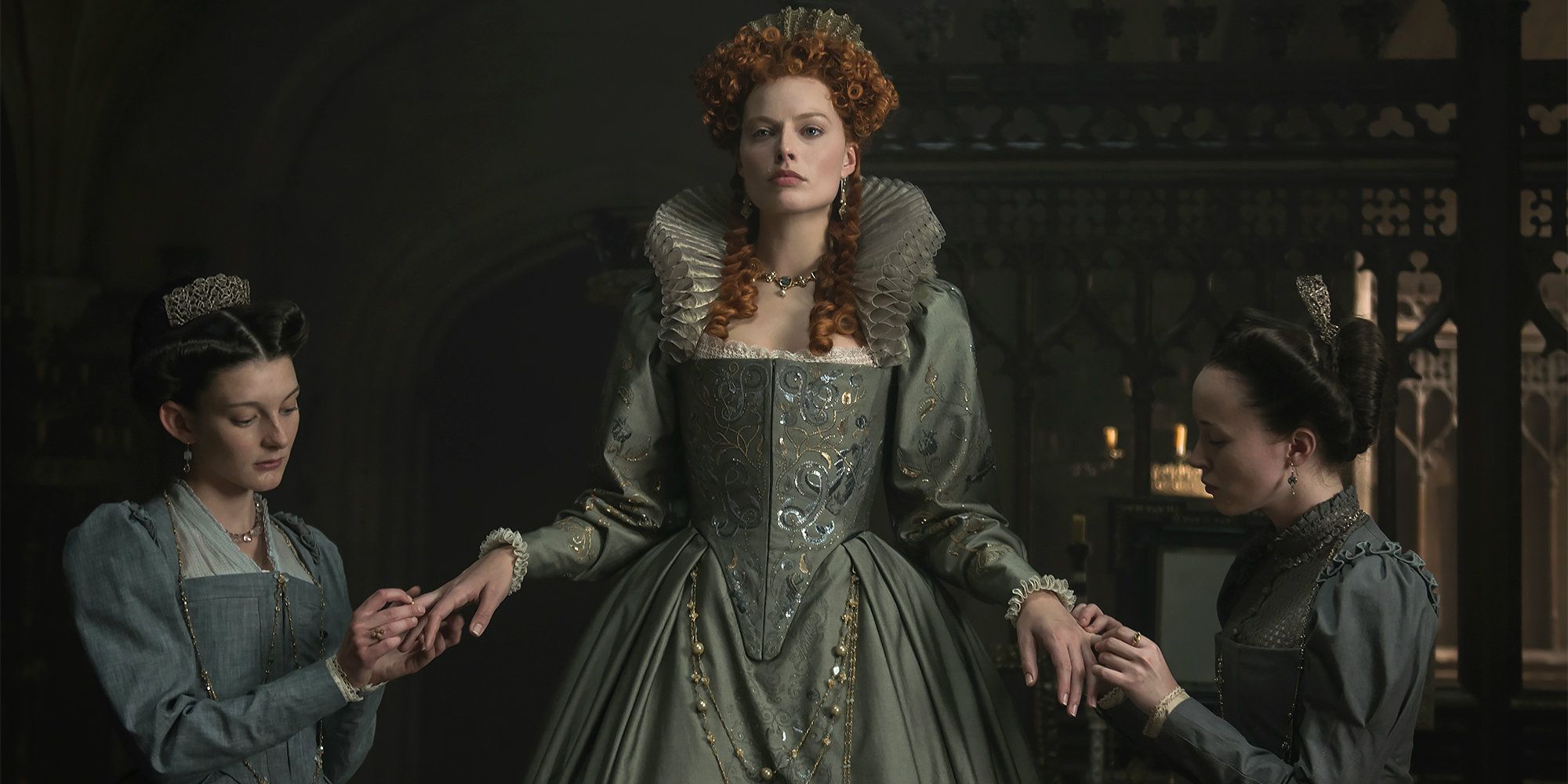Mary Queen of Scots tells the true story of the 16th-century Scottish monarch, but the film also makes some key changes to history for dramatic purposes. Directed by Josie Rourke and written by Beau Willimon (House of Cards), Mary Queen of Scots stars Academy Award nominees Saoirse Ronan as Queen Mary Stuart and Margot Robbie as Queen Elizabeth I. The period drama is adapted from John Guy's biography Queen of Scots: The True Life of Mary Stuart.
Set between 1561 - 1587, Mary Queen of Scots details the rivalry between the Catholic Mary Stuart and her protestant cousin, Queen Elizabeth of England. Mary's return to Scotland after a brief reign as Queen consort of France sets off tensions between Catholics and Protestants in her home country. The issue between Mary and Elizabeth centered around Mary's desire to be named the successor to England's throne, which eventually was granted to her son, James, after Elizabeth agreed to be his godmother. However, Mary's reign in Scotland was marked by a turbulent marriage to Lord Darnley (Jack Lowden), a coup attempt by her half-brother the Earl of Moray (James McArdle), and Mary being forced to wed the Earl of Bothwell (Martin Compston), her third husband. Mary is forced to abdicate her throne and flee to England where she is held under house arrest for 19 years and is finally executed in 1587. After Queen Elizabeth's death in 1603, James I becomes King of England and Scotland.
Mary Queen of Scots builds to a pivotal climactic meeting between Mary and Elizabeth, a moment that never happened in real life. When Mary was in England, Elizabeth kept her cousin under house arrest in different locations, but the two monarchs never met face-to-face. As the film depicts, the two queens did, however, exchange numerous letters in which they initially professed admiration for each other and they also exchanged portraits. In the film, Elizabeth signs Mary's death warrant before her privy council after Mary is implicated in plots against the English crown, and Elizabeth narrates her reasons and regrets. Historians argue that while Elizabeth did condemn Mary to death, she signed her warrant along with other papers, and Elizabeth was distraught when Mary was executed, shouting that she never meant Mary's execution to be carried out. Elizabeth actually resisted executing her fellow monarch for years.
Mary Queen of Scots posits that Lord Darnley, Mary's second husband and the father of James, was a homosexual who had a tryst with Mary's secretary David Rizzio. In fact, Darnley was effeminate and bisexual, and he was caught in bed with Rizzio, which later led to Rizzio's murder. Darnley was also a scoundrel who married Mary because he thought that would make him the King of Scotland, but their relationship quickly soured. However, Mary Queen of Scots' depiction of Mary forcing Darnley to impregnate her is likely a dramatic invention.
As in the film, Darnley tried, and failed, to usurp the throne; he was later murdered and his house was destroyed by an explosion, which Mary was blamed for. This led to the series of events that forced Mary to abdicate her throne and seek refuge in England. As Mary Queen of Scots depicted, James Hepburn, the Earl of Bothwell, abducted Mary and forced her to marry him. According to historians, Bothwell raped Mary, and while she became pregnant, she also miscarried. When Mary abdicated, Bothwell fled to Denmark and died in prison.
Mary Queen of Scots' multicultural cast is also not historically accurate. Along with Puerto Rican actor Ismael Cruz Cordova as David Rizzio, Adrian Lester, a British actor of Jamaican descent, plays Lord Thomas Randolph, Elizabeth's ambassador to Scotland. In addition, Chinese actress Gemma Chan plays Bess of Hardwick, a close companion of Queen Elizabeth's. The real-life Randolph and Bess were not people of color but director Josie Rourke opted to give Mary Queen of Scots a contemporary spin and she chose her actors to reflect the complexity of modern Britain. Mary and Elizabeth's 16th-century courts weren't as diverse but, instead, Mary of Queen of Scots depicts the intrigue of the past melded with the look of the world we live in today.


